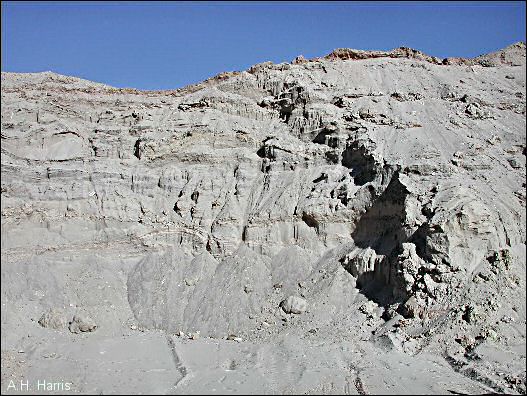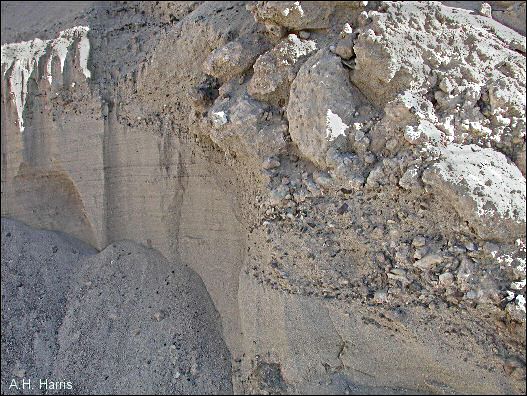

We often don't appreciate what's under our feet, being only
vaguely aware as we walk through the desert of the dirt we're tramping upon. But
most places, there's more to dirt than—well, than just dirt. Find yourself a cliff,
a road cut, or a sandpit. Surprise! That's not just dirt, but fossilized history.
Those layers of gravel? Carried along by rambunctious waters in river or arroyo. Banks
of sand? Dropped by more genteel currents. A wedge of clay or silt? Where a trapped
pool, deprived of motion, dropped its burden. All may be static now, but the evidence
of past fury lies captured for all to see. Look closely—over there, a channel in fine
sand carved by rushing water and filled with gravels. And what's this? A sand bar
perched on river gravels before being buried again. Our Rio Grande is a restless river,
having filled the ancient basins with hundreds of feet of sand, gravel, silt, and clay,
it now has had a change of heart, and is slowly excavating its valley through what once
was its bed.

Contributor: Arthur H. Harris, Laboratory for Environmental Biology, Centennial Museum, University of Texas at El Paso.
Desert Diary is a joint production of the Centennial Museum and KTEP National Public Radio at the University of Texas at El Paso.

Wall of sandpit revealing sands and gravels deposited by the ancestral Rio Grande. Photography by A.H. Harris.

Wall of sandpit showing where a channel had been eroded into earlier deposited sand and then filled with coarser material. Photography by A.H. Harris.